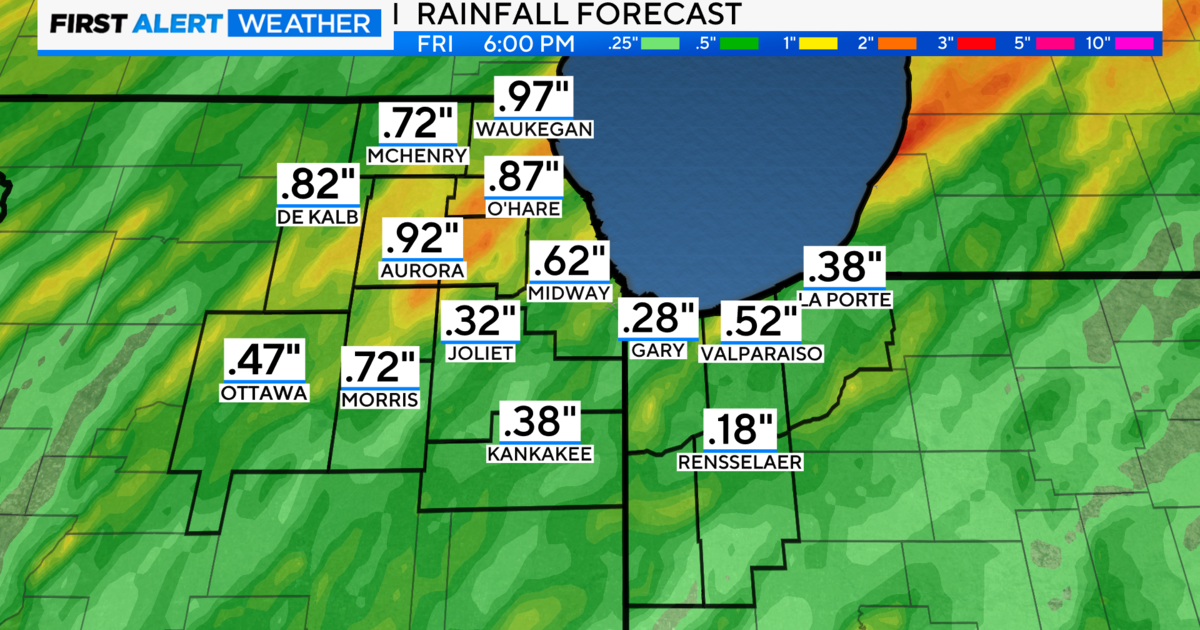How to view the Geminids meteor shower in the Chicago area
CHICAGO (CBS) -- Wednesday night will be clear and perfect for viewing the Geminids meteor shower in the Chicago area as it peaks.
Conditions have been clear this week, and CBS 2 Chief Meteorologist Albert Ramon noted that Tuesday night was also a new moon. Thus, the lack of moonlight will also make for a dark night for viewing the meteor shower.
Ramon also notes that getting away from light pollution increases the chances of seeing the Geminids.
The Geminids, considered one of the best and most reliable meteor showers of the year. Activity began on Nov. 19, but the cosmic show will continue until Dec. 24, with a peak from Wednesday night into Thursday morning. The shower typically starts around 9 or 10 p.m.
The Adler Planetarium noted that the radiant – the point from which the Geminid meteor showers appear to emanate – is close to Pollux and Castor, the two brightest stars in the Gemini constellation. But Geminid meteors go all over the sky from the radiant point, the Adler said.
Under very dark and clear skies, up to 100 meteors an hour can be seen, the Adler said.
The Adler advised finding a spot far from the light, facing east, and giving your eyes at least 20 minutes to acclimate to the dark before watching for the meteor shower.
NASA goes so far as to advise lying on your back on the ground with your feet facing south and looking up, while waiting 30 minutes for your eyes to adapt.
Either way, while it's going to be unseasonably warm for the rest of the week – and not as chilly Wednesday night as it has been the last few nights – the lows will still be in the low 30s Wednesday night in Chicago and in the 20s in the suburbs. Whether you stand up or lie on your back to watch the Geminids, you'll need a warm winter coat.
The Geminids are usually the strongest meteor shower of the year, with a rate of 120 meteors per hour under perfect conditions, according to NASA. The Leonids, which peaked in November, feature an average of 15 meteors an hour.
Most meteor showers originate from comets, but the Geminids come from 3200 Phaethon, an asteroid. The asteroid acts like a "weird" comet.
The annual meteor shower first appeared in the mid-1800s. At the time, there were 10 to 20 meteors an hour, but the shower has grown bigger in the years since.
NASA scientists say the Geminids are bright, fast and usually yellow in color. Most meteors appear to be colorless or white, Bill Cooke, lead for the Meteoroid Environment Office at NASA's Marshall Space Flight Center in Huntsville, Alabama, said in a NASA blog post.
The Geminids will streak through the sky at a speed of 22 miles per second.
Meteors are space rocks that enter Earth's atmosphere, according to NASA. They heat up as they fall toward earth and appear as shooting stars. The streak of light is glowing, hot air as the meteor speeds through Earth's atmosphere.
While meteors streak through the sky every night, there are several meteor showers each year. During meteor showers, many meteors hit Earth's atmosphere in a short period of time. Most of the meteors burn up in space. The few that survive the trip through the atmosphere and reach the ground are considered meteorites.



